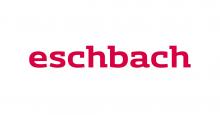39th Center for Chemical Process Safety (CCPS) International Conference
The Center for Chemical Process Safety (CCPS) International Conference is one of five parallel sessions that comprise the Global Congress on Process Safety (GCPS). The CCPS Conference promotes process safety by identifying emerging process safety issues and advancing leading process safety management practices. It is dedicated to managing process safety systematically, locally, regionally, and internationally.
Conference Registration is now open!
Encouraged topics for this conference include, but are not limited to:
-
Advances and Innovations to Drive Highly Effective Asset Integrity Programs
-
Continuous Improvement with RAGAGEP - Managing Changing Standards and Best Practices
-
Don’t Pardon the Dust – Risk-Based Approaches to Managing Combustible Dust Hazards
-
Process Safety Excellence Through Influential and Inspirational Leadership
-
The Wild World of Mergers, Acquisitions, Divestitures, and Industrial Parks
-
Winning the Hearts and Minds – Excellence in Process Safety Culture
CCPS Chair and Vice Chair:
-
Don Connolley and Lauren Moyer , CCPS_chair@aiche.org
Session Topic Descriptions:
Advances and Innovations to Drive Highly Effective Asset Integrity Programs A reliable chemical plant is safe, profitable, and environmentally responsible. Reliable plants have higher capacity utilization and experience fewer process upsets and loss of primary containment (LOPC) events. Asset integrity is a key driver to both reliability and process safety that should include effective condition monitoring programs, a robust management system involving all asset stakeholders, and effective communication of metrics and findings. This session seeks papers that describe best practices in asset integrity programs, innovations in inspection and testing methods and technologies, effective metrics and management review practices, and how these can be used to advance process safety excellence.
Continuous Improvement with RAGAGEP - Managing Changing Standards and Best Practices
As advances are made in knowledge and experience, so, too, do Codes, Standards, and consensus industry practices evolve. For added complexity, RAGAGEP may be found in many sources beyond regulatory codes and consensus standards, such as published papers, incident reports, etc. However, it is difficult for facilities and their personnel to keep up with these advances and to know what, if any, of these changes they must adopt or should consider. This session invites papers that describe successful practices to monitor, evaluate and implement as appropriate the changing world of standards and RAGAGEP.
Don’t Pardon the Dust – Risk-Based Approaches to Managing Combustible Dust Hazards
Combustible dusts are finely divided particulate solids that can produce a flash-fire or explosion when suspended in air and ignited. Examples can be found across the process industries. Although many of the hazards associated with these materials parallel those associated with flammable gases and liquids, the management of combustible dust is often not subject to the same external requirements (e.g., codes, standards, and regulations). This session solicits best practices and lessons learned from the development and implementation of safety management systems intended to control combustible dust hazards, including at facilities where other hazardous materials are managed. Example topic areas include management system approaches to hazard identification and risk analysis, fugitive dust prevention (containment, dust collection, and housekeeping), ignition source control, explosion prevention/protection asset integrity management, hybrid mixtures, metal dusts, reactive dusts, and compliance with standards.
Effective Process Safety Management Programs
Effective process safety management programs need to have a foundation of a strong safety culture, committed leadership, properly designed and integrated management systems, and operational discipline in following program requirements. Topical papers about developing needs, best practices, new or improved approaches or methodologies, interesting applications, key learnings or trends, or specific examples of successes or actions in progress related to implementing and sustaining effective process safety programs are encouraged.
One of the four foundational pillars in the Risk Based Process Safety structure is Learning from Experience. A well-known adage says that if we fail to learn from our mistakes then we will be doomed to repeat them. This holds true for Process Safety Management systems. This session solicits papers that describe approaches to establish or improve management systems for Learning from Experience, including Incidents and Investigations (both internal and external), Measurements and Metrics, Auditing, and Management Review and Continuous Improvement.
Process Safety Excellence Through Influential and Inspirational Leadership
Many times, people think of leadership in the traditional sense of organizational and hierarchical leaders. However, process safety professionals have an obligation to inspire and influence people to do the “right thing” when it comes to process safety. This session solicits papers that describe approaches to influential and inspirational leadership that drive teams to excellence in process safety, ranging from the individual facility level to the board room. Preference will be given to papers that can connect these leadership programs to demonstrated improvements and/or sustained excellence in process safety lagging indicators.
Outreach for Stakeholders Inside and Outside the Fence Line
A process safety management program can impact stakeholders that extend beyond the Company’s employees. These stakeholders can reside inside or outside the facility fence line. Examples include contractors and subcontractors who are important stakeholders that are impacted by the hazards of a process within the fence line. Additionally, outside the fence line the local community and emergency responders are also critically important stakeholders for facility’s process safety management program. This session seeks papers that highlight innovative approaches for communication and coordination with “external” stakeholders on either side of the fence. Relevant topics include contractor and subcontractor (selection, qualification, and management), emergency management and response (planning and coordination), and community outreach and education.
Process Safety in a Climate-Friendly Future World
With many saying a climate catastrophe is in the world’s future, new ideas to slow down the pace of climate change have been introduced and developed. Some of these include carbon capture, carbon storage/sequestration, lithium-ion battery technology, hydrogen generation, blue (insert chemical here), green (insert chemical here), and bio-based materials. With these new processes will come management system needs. Will they be classical needs? Or will they be different in some way? This session is seeking papers to link process safety management system concepts and techniques to the new emerging and evolving technologies in a climate-friendly future world. Will process safety professionals be forced to adjust? Or are they right sized for the global future?
Back to Top
Process Safety in Power-to-X (P2X)
Power-to-X (also known as PtX or P2X) is a collective term for conversion technologies that turn electricity into carbon-neutral synthetic fuels, such as hydrogen, synthetic natural gas, liquid fuels, or chemicals (“X”). Power-to-X allows for the decoupling of excessive power – especially from green energy sources - from the electricity sector for use in other sectors, such as transport or chemicals, for the production of synthetic fuels without the need of fossil fuels, thus helping to reduce the CO2 footprint. This new field presents new challenges with regard to process safety and this session invites experts to submit papers to address their nature and substance and how they can be solved.
Back to Top
The Wild World of Mergers, Acquisitions, Divestitures, and Industrial Parks
Once it was commonplace for there to be one owner of a manufacturing complex who controlled all the assets of the complex and employed all the personnel who worked there. After countless mergers, acquisitions, divestitures, and other types of financial transactions occurring in the processing industries, sometimes it seems like the first process safety consideration is the contract language. The relationship between companies varies depending on the type of transactions that have occurred, such as a change in ownership, an agreement where one company operates another company’s assets, and the landlord-tenant or tenant-tenant interactions in industrial parks (I-Parks). Each of these types of arrangements create challenges and complexity in managing the process safety concerns for a facility. For example, in I-Parks there can be issues around the typical shared services (e.g. utilities, emergency response and security) as well as shared control rooms, shared control systems and protection strategies. In owner-operator relationships, there can be complexities around what management systems are used and who is responsible when something goes wrong. Even in a conventional acquisition when the transfer of ownership and operational responsibilities is clear, the transition can create turmoil and therefore increase process safety risk. Finally, many of the personnel who work at these facilities as operating technicians or maintenance craftspeople are employed by third party contractors. This session requests papers that describe how the multitude of these Process Safety challenges might be addressed in these often complex situations.
Winning the Hearts and Minds – Excellence in Process Safety Culture
It is well recognized in the Process Safety Community that the success -- or failure -- of a Process Safety Management system rests squarely on the foundation of the culture upon which that system is built. If the employees are not “all in”, the Process Safety Management system will not enjoy the success to which it aspires. This session requests papers that explore ways to win the hearts and minds of the employees at a facility to obtain their buy-in and commitment to a Process Safety culture of success.
Back to Top
GCPS Joint Session: Case Histories
Reviews of process safety incidents provide valuable learning opportunities. This session invites papers to help understand the causes and lessons learned from incidents in the industry with an emphasis on events that have helped define and develop the process safety field over the years.















